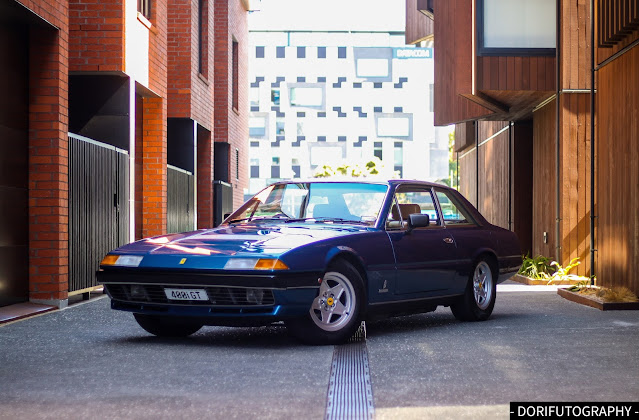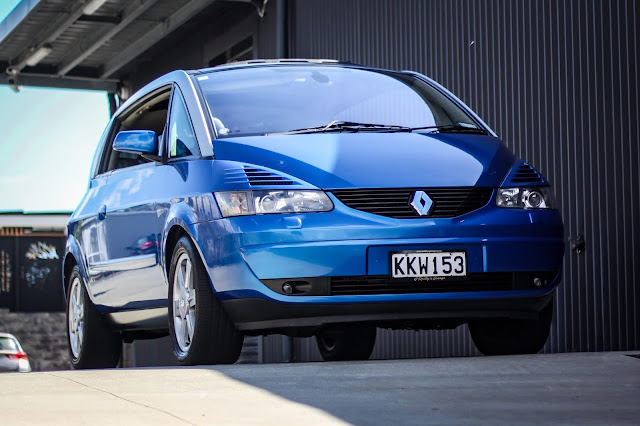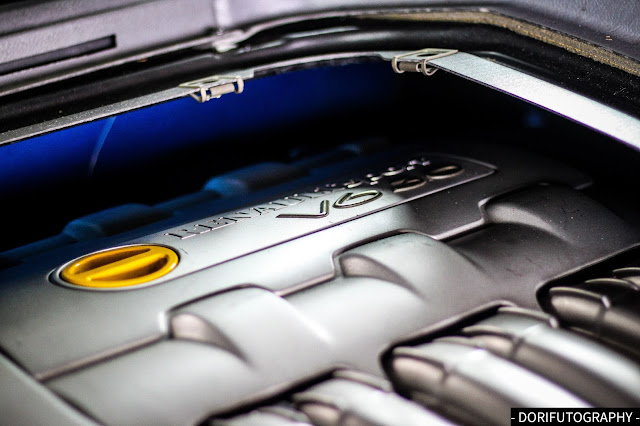After publishing the last article ‘Coachbuilt Concepts: Gruppo Bertone in the 60’s’, it was such a good read! (I read it again myself actually.) And now I’m writing the follow up of that one, as it would be a sin not to! So, here’s to one of my favourite decades in Gruppo Bertone’s portfolio of gorgeousness!
1970:
1. Bertone Shake
Starting off with something like this is one hell of an introduction to Bertone’s 70’s wedge designs. It’s a beach buggy, and just like the more famous Meyers Manx, which was built upon a Volkswagen Beetle chassis, the Shake was built upon the Simca 1200 S chassis, featuring the same French engine, and its styling taking cues from the 1969 Autobianchi Runabout (like its powerboat appearance and C-Pillar set headlights). When it was presented at the 1970 Paris Motor Show, it received an all round positive audience, especially with the younger generation!
2. BMW 2200 TI Garmisch
Saying the new vertical kidney grills of BMW aren’t true to its history is a false claim. In fact, BMW has always been using giant vertical grills, ever since the 1934 BMW 309. So really, the new 4 Series is only returning to their origins. Midway through these 2 cars was the Garmisch, based on the BMW 2200 TI, it also incorporated giant vertical kidney grills. This time following Bertone’s styling, by making them hexagonal instead of the standard oblongs. The rest of the car however, was more Italian than anything, closely resembling Bertone’s ‘67 Fiat 124 Executive, but more slanted and angled.
3. Lancia Stratos Zero
Probably the most famous concept built by Bertone is this Lancia. Borrowing the styling from the older Carabo, it too joined the Wedge Car Hall of Fame, with its rocket-ship shaped body lines. The car had no conventional doors, instead employing a canopy windshield that opened upwards, meaning that the occupants had to get it from the front. Such design meant that the car had very poor side visibility, only having 2 tiny windows per side and no direct backwards vision. The most iconic feature about the Zero was perhaps the giant triangular engine cover that opened on one side, making the Lancia have one the most astonishing side profiles when it was open.
1971:
1. Lamborghini Countach LP400
Although most of Lamborghini’s models are named after fighting bulls and terminology circling around said subject, the Countach was an expression of astonishment was aptly named when Gandini used it to describe the car, and it wasn’t solidified as the name. But when asking Bob Wallace, a New Zealander, how it sounded to a foreign ear, the Kiwi said it back in his home accent, in which Gandini then made it the actual name of the car. So one could say, it was a New Zealander who named the Countach. The design itself was actually a direct successor to the Alfa Romeo Carabo, in which it took its famous wedge design as well as scissor doors! No wing mirrors? No fear. This Countach was nicknamed ‘Periscopo’ for the fact that it had a submarine-like periscope! And though later models of the Lambo added wings and skirts, the LP400 was a design so clean, you couldn’t get the same feeling with the ones that followed.
2. Lamborghini Urraco
So far, Ferruccio had created a car to compete with every Ferrari that came to fruition through. But when cars like the Ferrari Dino 308 GT4 and Maserati Merak emerged, Mr. Lamborghini also had to jump at the chance. Though it was marketed as an affordable supercar and was sold for 7 years, only 791 cars were manufactured before production ceased. The ‘Urraco’ name actually came from a line of fighting bulls that were smaller than others, roughly translating to ‘Little Bull’.
3. Lancia Stratos HF
It’s no wonder why the Stratos is revered as one of the most beautiful cars ever designed for production. Gandini was originally going to name the car ‘Stratoline’ as its lines were out of this world! Though other wedge cars went with flat planes for the windows, the Stratos featured a wraparound windshield, which has now gone on to be one of the key design features of modern supercars, like the Koenigsegg cars and the Enzo Ferrari to say the least!
4. Citroen GS Camargue
Built on a Citroen GS platform, Bertone revealed it’s signature wedge shape again, but this time with a little French influence. While the car resembled Citroen’s future models, like the BX and XM, the taillights were very American, looking like they were inspired by the 70’s Dodge Charger and Challenger models. While retaining the GS Saloon’s long 4.115m length, the Camargue was widened by 6cm and flattened by 20cm, the car looked more and more like a spaceship, coupled with the fact that the car still featured Citroen’s signature accessory, the hydro-pneumatic suspension!
5. Fiat X1/9
This car was another first for Gruppo Bertone, as 1972 was the year they created the world’s cheapest and smallest sports car, while still looking truly Italian and uncompromising, earning its nickname, “Baby Ferrari”. Fiat actually had no design input into the X1/9, which is why people normally omit the original manufacturer make and opted to call it the 'Bertone' X1/9. While Fiat wanted something to look like a natural successor of the 850, Bertone pushed aggressively for his now famous sharp wedge design! Originally, the Italian automaker wanted a conventional convertible with a soft top, but because of new safety regulations pushing for an overhead roll bar in case of a roll over, Fiat had no choice but to go with Gandini’s dorsal fin design. Being mid-engined meant that the car had 2 trunks, a small one in the back for groceries and other necessities, and a flatter one in the front for storing the removable hard top.
6. Maserati Khamsin
From 1968, Maserati’s ownership changed hands from the Orsi Family over to Citroen, where both car brands benefitted from each other: the Citroen gaining the seductive SM, and Maserati gaining new mid-engine, sports cars like the Bora and Merak. Now, while this was good, most Maserati customers were unhappy at the lineup’s lack of a luxury Grand Tourer, and this was where this car “Khams-in” to play. The new car was a direct successor of the beautiful Indy, and it’s design was unmistakable Maserati, albeit with a few nods to its French ownership, with taillights in the shape of the previously mentioned GS Camargue.
7. Suzuki Go
This little buggy was Bertone’s first collaboration with a Japanese manufacturer, and just like the first car on this article (the Bertone Shake), its unveiling was very well received. It looked like a mix between a toboggan and a fan-less hovercraft, with no visor, roof or roll bar. Though what it did have was the ability to load and unload a snowmobile, as the buggy was made for snow rather than sand.
1973:
1. NSU Trapeze
Just like the Maserati Khamsin, the Bertone designed German NSU Trapeze was like a Lancia Stratos redesigned for conventional use. With 4 seats rather than 2, the Trapeze was actually quite a large coupe. Though the interior was quite spacious, this made its engine bay quite flat and small, this challenge was accomplished by using NSU’s RO80 Rotary engine, as its displacement was proportionally smaller than its power output. More previous Bertone influence can be seen in its trapezoidal roof line, in which it was named after, and also the Citroen-like headlights.
1974:
1. Fiat 127 Village
More beach buggy goodness, but this time spawning from the mid-70’s energy crisis, with the Italian-automaker looking at economic efficiency. The car was essentially a tiny, 2-seater pick-up truck, with no doors, an exoskeletal roof, and a tiny bed which could also be fitted with 2 more seats. As previous smaller cars on this list, the pick-up was well-received by the public when it was presented at the Geneva Motor Show; and it can be said that this little buggy was the precursor to post-2000 recreational cars due to its innovation into versatile modularity.
2. Lamborghini Bravo
Also known as ‘Studio 114’, this Lamborghini was meant to be a provocation for an Urraco successor, focusing on economy rather than performance. Bertone’s styling still shone through, with angled, yet smooth, unbroken panes of glass, making for a wide range of visibility. The front and rear panels were covered in fins to allow for cooling and was the second car after the Lancia Stratos HF to use Alcantara in the interior.
3. Maserati Quattroporte II
It had been 5 years since the first generation Quattroporte had ended production, and in that time, Maserati was acquired by Citroen. This rendered the new Quattroporte II a very different car. Rather than being built on an all original chassis, the new car was on an elongated Citroen XM chassis. The shape of the car was also more boxier, to move with the times; but also sharper, more aerodynamic lines, minimizing wind, engine and road noise, and gaining that ‘leggera’ feel Gandini was aiming for.
1975:
1. Fiat 131 Abarth
Enter another famous rally-homologated car, the Abarth 131 was essentially a stripped out, pumped out, wide-tracked 131 econobox. To save weight, all panels except for the roof and the doors were made from glass-fibre, and all the windows were out of plexiglass. Bertone was responsible for manufacturing all the body panels, and then they were sent to Abarth to be put together. As per homologation rules of the era, 400 were to be built for street use, making this little rally car a unicorn car among many collectors’ garages.
2. Fiat Visitors Bus
The first appearance of a bus on this list, I wasn’t sure if I should have written or skipped it. But as it stands here, it’s actually quite small, and I’d say it was more of a minivan than anything. What set this MPV apart from other cars was that it had 3 rows of seats, each with their own pairs of doors, which opened out conventionally. The shape of the bus was symmetrical, confusing most with which way was meant to be the front.
3. Fiat X1/9 Dallara
We’ve mentioned the standard X1/9 on this list already, but I feel like the 1975 Dallara Group 5 Silhouette car deserves a few words. While unmistakably an X1/9, as per Group 5 cars go, only its ‘silhouette’ remained. Every other panel was exaggerated. With bulging guards, chopped and low, and a massive rear wing.
1976:
1. Alfa Romeo Navajo
Another year, another wedge. Though this one’s quite a bit different from the rest, as though the body was still very wedged, the cockpit was very rounded, a bit like a jet fighter. The spoiler wrapped around the cockpit, and was reminiscent of the Autobianchi Runabout. The headlights were similar to the Runabout too, mounted on the side of the car, rather than on the bonnet, though they were mounted on the front fenders instead of on the C-pillar.
2. Ferrari 308 GT Rainbow
Throughout the decades through different filters of media, including games and such, Ferrari has always been quite a restricting brand, not allowing radical customization, colours and modifications to their ‘perfect’ vehicles. This was a contradiction to that of Gruppo Bertone’s philosophy, which was to make something as unconventional as possible. And although Bertone’s previous Ferrari, the 308 GT4 Dino, was quite standard, black and white shapes and dare I say, boring, the Rainbow was on the other side of the spectrum. (See what I did there?) With jagged edges, weirdly placed scoops, a tiny strip for a skylight, a garage door hinged automatic sunroof, and a tiny 2.4m wheelbase, this was truly something special, and something I doubt Ferrari could ever recreate!
1977:
1. Jaguar Ascot
Although bearing the Jaguar nameplate, this car was far from it. While Jaguar’s styling of the late 70’s was still quite sensuous and round, the Ascot was completely different, following in the footsteps of Bertone’s last Jaguar creation, the Pirana. With straight, non-British lines, suede-covered interior and ridiculously close, center-mounted pop-up headlights, if I had told you the car was based on the XJ-S, you’d never believe me.
1978:
1. Lancia Sibilo
I love the late-70’s futurism, and the Sibilo is everything that embodies that interior. With no focus on performance, instead focusing all on that Bladerunner/Cyberpunk feel, the car had a very unique appearance. Lamborghini Bravo lines adorned the top section of the car, with the Ascot’s center-mounted pop-up headlights, bulging rectangular guards, and built on a Stratos chassis, it truly was something only a designer from that era could achieve.
1979:
1. Volvo 343 Tundra
The last car on this list is the Volvo Tundra, built on a Volvo 343 chassis and an econobox-design approach. Though the car looked brilliant as a compact coupe, the only thing resembling a Volvo was its front grill, featuring a lopsided opening with the Swedish manufacturer’s signature logo. The car was never actually produced under said manufacturer, instead being the basis for which the Citroen BX was based on.
And there we are, all 22 Gruppo Bertone concepts conceived during 1970-1979! Tell me which of these were your favourite, which were your least favourite! And should I do more Bertone? Or move on to other coachbuilders like Zagato and Pininfarina!
Until next time!















































